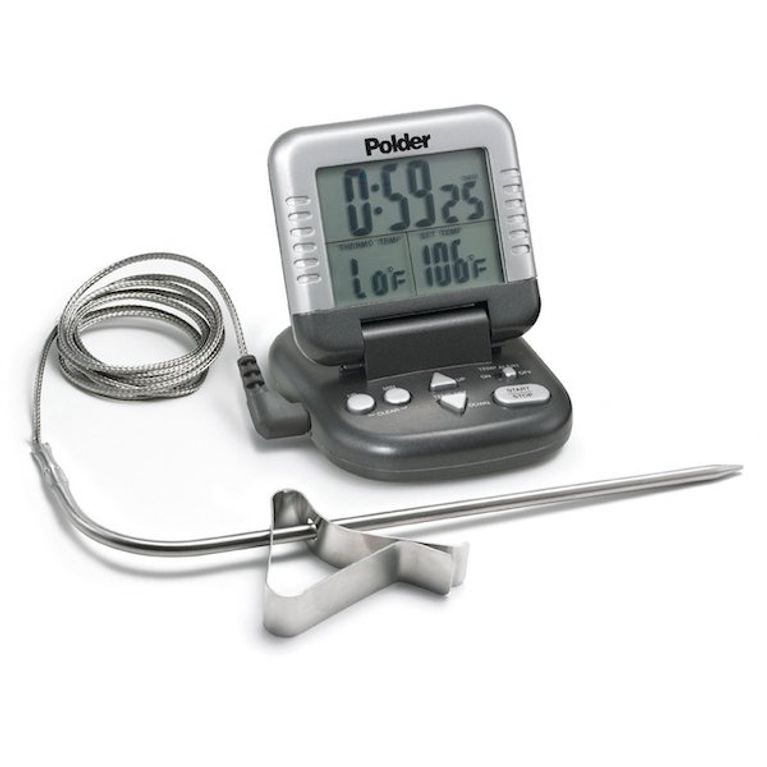How To Use A Meat Thermometer (And Why You Need One)

The best way to really know if your meat is cooked is by checking the internal temperature. Whether it's a chicken breast you don't want to dry out, or a splurge-worthy prime rib roast you (absolutely) don't want to overcook, this simple kitchen gadget can make all the difference when you're looking to impress, even if it's a one-pan meal meant just for you.
Below we'll explain how to use a meat thermometer and how the different types on the market vary so you can make the best choice for your cooking needs.
How to use a meat thermometer
The good news is, it's pretty straightforward. To get a precise temperature reading, insert the probe into the thickest part of the meat (in a whole chicken this would be the breast or leg.) Monitor the temperature towards the end of the cooking time and when you've reached the target, remove the meat from the oven (or heat source) and let it rest for 5 minutes to allow the juices to redistribute before digging in.
Tip: Keep the thermometer probe away from the bones — they will interfere with the temperature reading.
Oven-going vs. instant-read meat thermometers
Oven-going thermometers go in the oven and stay in the meat while it cooks, whereas digital instant-read thermometers are used after cooking to check for doneness. Note: Both types of thermometers should still be inserted into the thickest part of the meat.

Instant-read thermometers
These are fast, easy to use, and can provide an accurate reading in 10 seconds. Instant-read thermometers only need to be inserted a ½-inch into food to get an accurate reading, so they can be used for both thick and thin cuts.

Oven-going thermometers
These will take 1 to 2 minutes to register an accurate temperature, and should be inserted 2 1/2 inches into the thickest part of the food. This means they work best for larger pieces and roasts.
Tip: When using an oven-going thermometer, push it in just a little further after you take the chicken out of the oven, to double check that the meat is cooked sufficiently. (Why?)
Pork: 160F
Whole Chicken: 180F
Chicken Pieces: 165F
Ground Meat: 160F
Beef (Medium Rare): 145F
Beef (Medium): 160
Beef (Well Done): 170F
Watch: How To Make A Roast Chicken Sheet Pan Dinner
GET CHATELAINE IN YOUR INBOX!
Subscribe to our newsletters for our very best stories, recipes, style and shopping tips, horoscopes and special offers.
